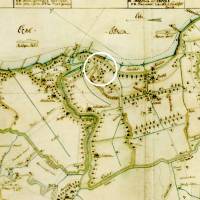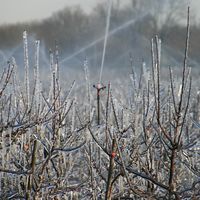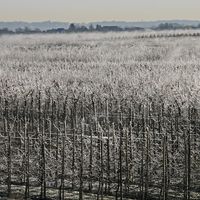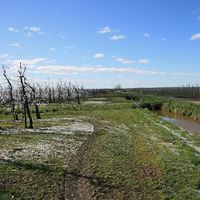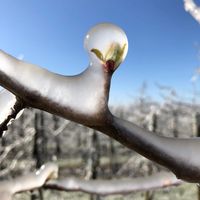53°33'02.8"N 9°39'55.2"E
Watering ponds Burweg
Interaction of natural and cultural landscape
Each mile of the Altes Land forms a compartment, which is completely enclosed by a dyke band. The respective dyke ring is composed of the Elbe dyke, the dykes at the tributaries Schwinge and Lühe, Lühe and Este, Este and Süderelbe, as well as the Hinterdeich, which should prevent water coming from the Geest and the moor. In addition, there were other forms, such as Kajedeiche or Sietwenden, by which the miles were divided into smaller areas. These inner dykes prevented extensive flooding in the event of a storm surge.
Originally, a lot of tidal creeks and meadows crossed the entire area. Their location can often be identified by the division of the land. In the Altes Land, the watercourses of natural origin are called “Fleet” (canals). The present place names Melau, Bassenfleth, Twielenfleth, Huttfleth, Zesterfleth refer to it.
Watering tanks are used to store water for blanketing operations. When water freezes, its aggregate state changes from liquid to solid and subsequently heat energy is released. The so-called solidification heat keeps the temperature at the blossoms near the freezing point while it can drop to -8° C in the environment. Thus, apple blossoms endure frost. Precondition is that the watering process is not interrupted as long as the frost remains. In the morning after a night of watering, the apple trees sparkle wrapped in their bizarre ice coats.
Due to planting new plants, during increasingly hot summers and longer dry periods as a result of climate change, water supplies are also needed for watering. In both cases the water quality is important so that threshold values of the iron and salt content may not be exceeded and the water of the Elbe cannot only be used to a very limited extent. During the last few years, grass carps have proved to be particularly suitable for keeping the water clean. A contribution to nature conservation are shallows in the watering tanks and a corresponding bank planting.
Watering ponds Burweg
Along a watercourse one can still see lower areas that were once covered with reed. Today, the watering tanks are installed at these always low, humid places.
The aerial photographs show the historic Burweg, today’s watering tanks and further back the transverse old inner dyke. There are used the same structures as in the historical maps from the 17th and 18th centuries.

